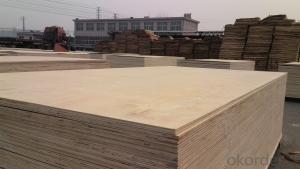Bending plywood is an art form that has been around for centuries, yet it continues to captivate the hearts and minds of woodworkers and designers alike. It’s a process that transforms a flat sheet of plywood into a beautiful, curved piece of furniture or art. But how does it work? And what makes it so special? Let’s dive into the world of bending plywood and explore the craftsmanship behind it.
The Magic of Plywood
Plywood is a versatile material made from thin layers of wood veneer that are glued together under heat and pressure. Each layer, or ‘ply’, is stacked with its grain running perpendicular to the adjacent layers, creating a strong and stable material. This unique structure allows plywood to be bent and shaped without breaking, making it an ideal candidate for bending techniques.
The Process of Bending Plywood
The process of bending plywood can be broken down into several steps. First, the plywood is soaked or steamed to make it more pliable. This can be done using a variety of methods, including placing the plywood in a steam box or submerging it in hot water. The heat and moisture help to soften the wood fibers, making it easier to bend the plywood without causing it to crack or split.
Once the plywood is softened, it’s time to apply pressure. This can be done using a variety of tools and techniques, such as clamps, molds, or even the human body. The plywood is carefully bent around a form or mold, and then held in place until it dries and retains its new shape. This process can take anywhere from a few hours to several days, depending on the thickness of the plywood and the complexity of the curve.
The Art of Craftsmanship
The art of bending plywood is not just about the technical process, but also about the skill and creativity of the craftsman. Each piece of bent plywood is unique, with its own set of challenges and opportunities. The craftsman must consider factors such as the type of wood, the direction of the grain, and the desired final shape when planning a project.
Moreover, the craftsman must also be patient and attentive to detail. Bending plywood is a delicate process that requires a steady hand and a keen eye. Any mistakes made during the bending process can result in a ruined piece, so it’s important to take the time to do it right.
The Beauty of Bent Plywood Furniture
One of the most striking aspects of bent plywood is its ability to create beautiful, flowing lines and shapes. This makes it an ideal material for furniture design, where it can be used to create chairs, tables, and other pieces that are both functional and aesthetically pleasing.
The use of bent plywood in furniture design has a long history, dating back to the mid-20th century when designers like Charles and Ray Eames began experimenting with the material. Their iconic Eames Lounge Chair is a prime example of how bent plywood can be used to create a comfortable, ergonomic, and visually stunning piece of furniture.
Modern Applications and Innovations
Today, the art of bending plywood continues to evolve and innovate. New techniques and technologies are being developed to make the process more efficient and accessible, while also pushing the boundaries of what’s possible with this versatile material.
From the use of advanced computer-aided design (CAD) software to create complex molds and forms, to the incorporation of sustainable materials and practices, the future of bending plywood is bright and full of potential. As more designers and woodworkers discover the magic of this ancient craft, we can expect to see even more amazing creations in the years to come.
The Emotional Connection to Bent Plywood
For many people, bent plywood is more than just a material or a technique. It’s a connection to the past, a celebration of craftsmanship, and a testament to the beauty of nature. Each piece of bent plywood tells a story, from the hands that shaped it to the trees that gave their wood.
In a world that is increasingly digital and impersonal, the tactile, organic nature of bent plywood provides a sense of warmth and comfort. It’s a reminder that even in the face of modern technology, there is still room for human touch and creativity in the things we create.
Conclusion
Bending plywood is a captivating art form that combines the ancient craft of woodworking with modern design and technology. It’s a testament to the ingenuity and skill of the craftsmen and women who work with this material, and a reminder of the beauty and versatility of nature. As we continue to explore and innovate with bending plywood, we can look forward to a future filled with even more stunning and inspiring creations.

